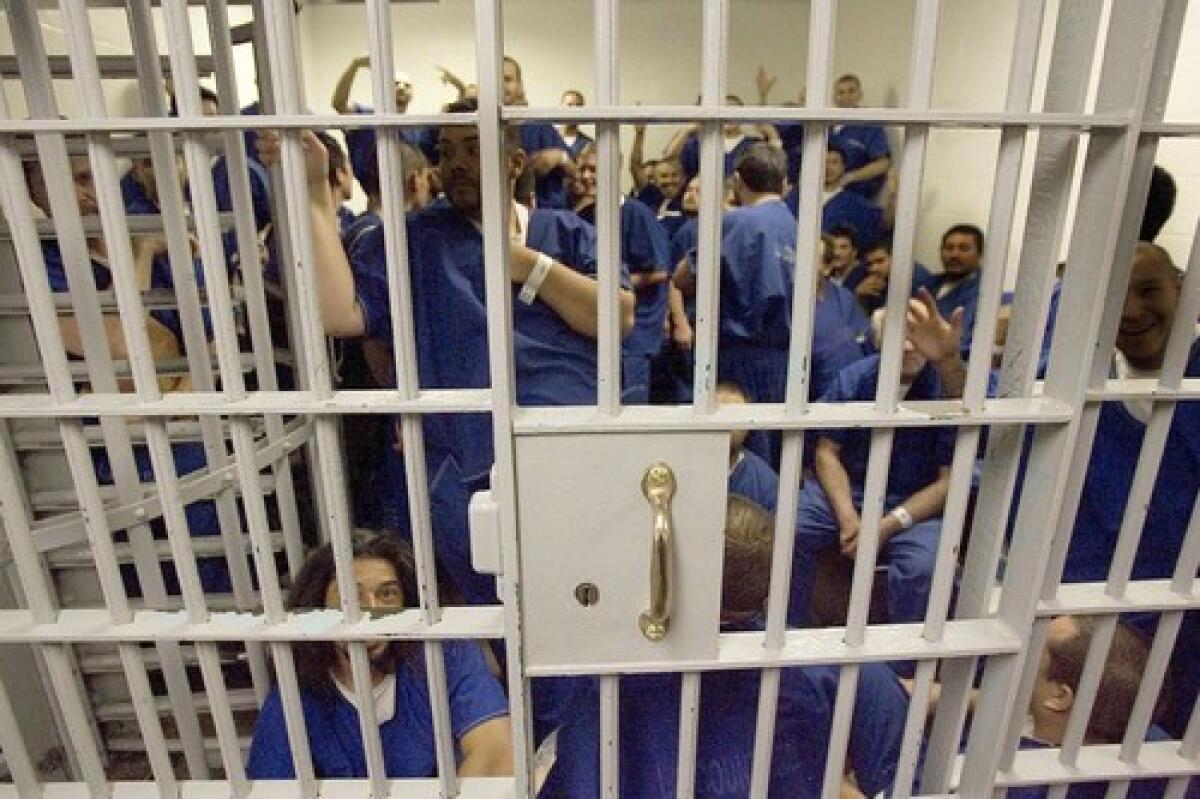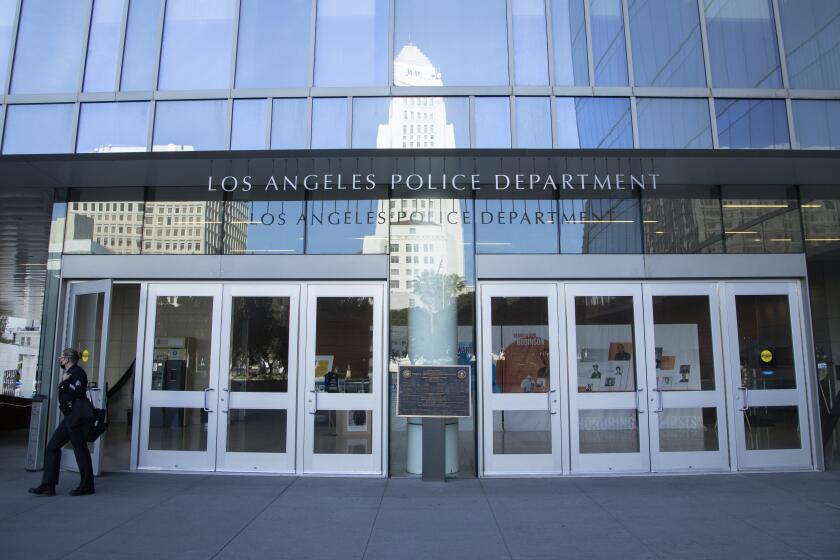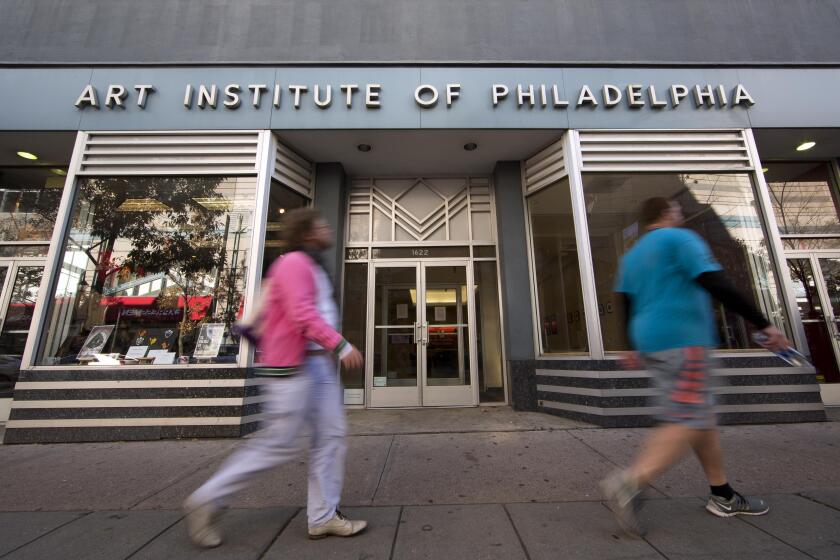Budget to reshape the Golden State

Roads will be rougher, classrooms fuller and textbooks more tattered. The odds of encountering someone fresh out of prison will almost certainly be higher.
If the budget deal crafted by Gov. Arnold Schwarzenegger and top legislative leaders is passed by the Legislature and survives the inevitable court challenges, California will undergo perhaps the biggest downscaling of government in its history.
The state will be reshaped, at least for the short term, into a domain that is more efficient by necessity, but also noticeably shabbier, less generous and possibly more dangerous.
Those who will notice the biggest changes will be students and the poor as class sizes increase and health and welfare benefits shrink. The pace of government-sponsored redevelopment will slow, and some state parks will close.
“These cuts are real, they’re going to be felt, they’re going to be seen,” said state Supt. of Public Instruction Jack O’Connell.
Details remained vague Tuesday about precisely how the cuts would be made, but enough trickled out to allow a general overview.
Educators seem to be cautiously optimistic
Educators seemed cautiously optimistic that the cuts would not be quite as grave as feared, and that the trims and layoffs they made in anticipation of the lean state budget would be sufficient.
“Man, I sure hope so,” said Ron Lebs, deputy superintendent of the Capistrano Unified School District in Orange County. “This has been a tough budget year all the way around.”
His 51,000-student district has already cut $25 million from its budget for the upcoming school year, in part by laying off 140 of its approximately 2,250 teachers, increasing class sizes for its youngest students, eliminating funding for junior varsity sports coaches and reducing spending on programs for gifted students, music and the arts.
O’Connell said the budget includes provisions that eliminate state funding for new textbooks for five years, get rid of a requirement that special education students must pass the high school exit exam to obtain a high school diploma and reduce the minimum length of the school year from 180 days to 175.
The superintendent and others said they were pleased that Proposition 98, which requires that roughly 40% of the state budget be earmarked for education, was not suspended. There was concern, however, that the budget deal was not specific about when schools might be repaid for past cuts.
Gayle Pollard-Terry, a spokeswoman for the Los Angeles Unified School District, said leaders of the state’s largest district thought they had made sufficient -- and painful -- cuts to get through the next school year, including laying off about 2,000 teachers. But conflicting reports suggested that the state reductions could require the district to undertake another round of trims, she said.
Higher education officials were relieved that the CalGrant program, which offers cash grants to lower- and middle-income college students and had been considered for elimination, had apparently been saved. But that was about the only relief in sight. The state will cut funding to both the University of California and California State University systems by about 20%. And campuses throughout the state are cutting class offerings, raising student fees and instituting furlough plans for faculty and staff.
2 health and welfare programs are targeted
Miriam Ibarra, 31, of Victorville, sighed when she heard about the budget cuts affecting the Healthy Families program, the low-cost medical insurance program for the working poor. About half the children enrolled in the program appear likely to lose their healthcare.
“It would really affect me because I don’t have any other kind of insurance,” she said. “Honestly, I don’t even know what I would do” without it.
Ibarra’s husband is a truck driver who doesn’t get health benefits because he is self-employed. Ibarra, a stay-at-home mom, and her husband go without health insurance. But the Healthy Families program covers the couple’s two children, ages 14 and 10, for a premium of about $10 a month, with $5 co-pays for some visits.
Ginny Puddefoot, a spokeswoman for the Managed Risk Medical Insurance Board, the state agency that operates the program, said she is expecting about $124 million in cuts, in addition to an existing $20-million shortfall. Since the federal government kicks in $2 for each $1 the state spends on the program, she said the total loss will be about $432 million out of a total budget of slightly more than $1 billion.
CalWorks, a welfare-to-work program, also is targeted for large cuts. Raymond Greer, 26, an unemployed security guard, already saw his family’s CalWorks grant cut from $723 to $665 earlier this year, and now is looking at the possibility of further cuts of up to half his monthly grant.
“We survive on this,” Greer said as he stopped by a social services office in South Los Angeles with his girlfriend and twin 1-year-old sons. “Don’t start taking from the people that don’t have anything.”
Redevelopment agencies see cuts as catastrophic
Officials with local redevelopment agencies described the $700 million in cuts they were facing as catastrophic and began planning a lawsuit and a public relations campaign to try to reverse the decision.
“They are stopping the one economic development program that the state of California has -- in the worst economic climate in 70 years,” said Cecila Estolano, chief executive of the city of Los Angeles’ Redevelopment Agency, which is the state’s largest.
Estolano estimates that the cut would cost her agency $72 million this year, potentially putting 2,300 construction jobs at risk. Because redevelopment agencies partner with private companies to do projects in redevelopment areas, Estolano estimated that the state’s cut also could mean the loss of more than $360 million in private investment in the city.
Among the threatened projects in Los Angeles, according to the agency, are an affordable housing project in Hollywood, a shopping center in Reseda and a park planned for the downtown industrial area.
The redevelopment agencies could benefit in the long term under a long-shot proposal being floated by Senate Minority Leader Dennis Hollingsworth (R-Murrieta). Although it would still cut the agencies’ budgets, it would allow them to extend their powers to subsidize development by 30 to 40 years. In exchange, they would give the state 10% of any increase in property tax revenue. The state would borrow at least $7.4 billion against those future revenues to avoid making cuts to local governments.
The proposal reportedly came from lobbyists for the City of Industry, which is seeking an extension of its expiring redevelopment program to develop land near a proposed National Football League stadium, which would be privately developed.
Local government, transit officials angry
No group is angrier than local government officials, some of whom see the proposal to raid their coffers for roughly $2 billion in revenue as nothing short of robbery.
“The bottom line is that the state is going to balance its budget on the backs of municipalities,” Los Angeles City Councilman Dennis Zine said.
“I am really mad,” Glendale City Manager Jim Starbird said. “This is irresponsible. And the Big Five [state leaders] came out of that meeting patting each other on the back and smiling.”
The city of Los Angeles stands to lose at least $186 million in state funding: $120 million in property tax revenue and $66 million in gas tax revenue. The latter cut represents almost all the money that the city receives from gas taxes, which are used for street repair and maintenance. The rest would be cut from the city’s general fund, and it wasn’t clear Tuesday what programs would be hit.
Los Angeles County officials said they were facing a budget gap that would be created by state leaders taking $301.9 million that had been guaranteed to the county under Proposition 1A, the 2004 constitutional amendment that was designed to protect local revenues from state encroachment. “We just don’t have $300 million sitting around,” said the county’s chief executive, William T Fujioka.
Orange County will be hit with a loss of approximately $89 million to $93 million, in addition to cuts in health and welfare services, said Frank Kim, an official in the county’s executive office. That is expected to include about $37 million from the county’s general fund, up to $35 million in transportation funds, about $4 million from the Parks Department, about $3 million from the libraries and $5 million from flood control.
The state budget also calls for selling the Orange County Fairgrounds. The Fair Board is considering buying it from the state and forming a nonprofit to run it.
27,000 inmates may be released from prison
What may prove to be the most controversial element of the budget is a plan to reduce the state’s prison population by nearly 27,000 inmates.
The plan would save $1.2 billion in the coming fiscal year by granting inmates early release for making progress in rehabilitation programs, allowing some to finish their sentences under electronic monitoring at home, and changing some felonies to misdemeanors so that convicts would go to county jails rather than state prisons.
At the same time, the state will be cutting funds to counties, prompting L.A. County Sheriff Lee Baca to complain that he is being left in a no-win situation. He summarized his choices: “Either close jails or take cops off the streets. Both are unacceptable to me.”
Baca said he is joining the Los Angeles County Board of Supervisors in a lawsuit against the state, claiming that by dipping into local revenues, the state would be violating the law.
The sheriff has been a longtime friend and political ally of Schwarzenegger. “The governor, I think, is stuck,” he said. “He is playing the cards the Legislature dealt him.”
State parks system may dodge a bullet
The state’s conservation and resource agencies -- which generally don’t have dedicated funding sources -- depend on bonds or the general fund and are especially vulnerable to cuts. Given that, the state parks system may have dodged a bullet. The agreement calls for a $70-million cut, about half the agency’s annual budget. But legislators were able to find $62 million to backfill for this year only, leaving the parks with an $8-million shortfall.
That is expected to force the closure of some parks, but is a far better scenario than the governor’s proposal to close 220 parks, or 80% of the nation’s largest state park system.
Roy Stearns, a spokesman for the parks agency, said officials were still examining the options, but Traci Verardo-Torres, vice president of government affairs for the California State Parks Foundation, said there is no question that some parks will be closed. The organization estimates as many as 30 parks will be shuttered.
Left unresolved is where state parks funding will come from next year. “The governor’s offer was to totally cut the state parks from the general fund over two years. The legislation has agreed with him on the first step, for this year at least,” she said. “Where do we go next year?”
mitchell.landsberg@latimes.com
Times staff writers Tami Abdollah, Howard Blume, Julie Cart, Jia-Rui Chong, Jessica Garrison, Molly Hennessy-Fiske, Gale Holland, Seema Mehta, Patrick McGreevy, Jason Song, Dan Weikel, Phil Willon and Richard Winton contributed to this report.
More to Read
Start your day right
Sign up for Essential California for news, features and recommendations from the L.A. Times and beyond in your inbox six days a week.
You may occasionally receive promotional content from the Los Angeles Times.






